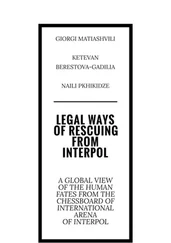Quiet once more. Babaji has come and is seated on the asana, cross-legged, hands resting on his knees, head inclined slightly forward, eyes lowered. The arati begins.
This divine worship at sunrise and sunset is the most sacred part of the day. To the chosen form of divinity, whether it be a picture, a statue, or the avatar himself, are offered incense, flowers, fire and water to the accompaniment of sacred chants and ritual gestures. Fire is the symbol of the sun - a life-giving divinity - it is the power that purifies and its perfection reflects the enlightened one. Water is offered as the elixir of life.
The arati to Babaji himself is a time when one can catch a glimpse of his essential transcendent quality. Today, dressed in white, it seems as though his body is no longer touching the seat, his frame appears nonphysical, almost a part of the stillness that emanates from him. His eyes are wide open now and gaze calmly into the sacrificial fire; it is as though his body has become translucent, letting through the light which is the very nature of his being. I turn and look into the faces of those sitting near me; all of them are etched with weathered lines born of a hard life, yet the sincerity of these people's devotion imparts such a softness to their features and the same light shines through their eyes also. I cannot remember ever having witnessed a more moving ceremony than this celebration of the mystery of light.
The evening arati ceremony is followed by an improvised programme of chanting, the opportunity of darshan and a couple of brief addresses given by devotees to the assembled group. Little by little the evening's events take on the atmosphere of a folk festival - the bright decorations blend well with the colourful character of all the goings on, the 'theatre', fitting the maxim: 'no colours, no guru'. Eventually Babaji stands up and makes his way down the aisle to leave and retire for the night. The crowd quickly disperses and soon there is only silence and darkness.
An odd little group or two remains quietly holding satsang [sharing of spiritual experiences]. Some brahmins have gathered round the yagna-shala where tomorrow the traditional fire ritual, which has been performed daily over the last few days, will reach its climactic end. After that a bhandara [great feast] will be held and the whole village is invited. Out on the wide terrace one disciple is attempting to explain to a newcomer the historical background of the phenomenon of Babaji as avatar.
All else is very still now. The sky is so vast and starry in this place and amplifies the peace of the blackened landscape. Some more shrouded figures join the disciple on the terrace and squat down to hear his stories in the dim light of a little oil lamp. I too go softly over to them and listen.
2) ABOUT HINDU PHILOSOPHY
The Hindus 1believe that underlying all the different and constantly changing forms of life there exists a basic unity, and for people of a religious nature, the principal task in life is to penetrate with awareness all the manifestations that make up daily experience and maintain the link with this unifying power.
This unity may be experienced within oneself as well as without, in the immediate environment and in the cosmos. As the one, the unity, takes on the dimension of space, it becomes the many, the diverse manifestations. In Hindu mythology these diverse forms are worshipped as various aspects, all part of the one, universal originator. The different qualities are personified and this is the basis of polytheism in the Hindu religion.
The plurality of divine manifestations is based on a trinity: the creative power is worshipped as the god Brahma; the power that sustains creation as the god Vishnu; and the power that dissolves all that has come into being and thereby transforms it, as the god Shiva.
Each of these gods has a divine, female partner, whose function is commensurate with that of her male counterpart. The goddess represents the shakti [power] of the god and she is the dynamic expression of all that he contains within his stillness. Everything that is manifested, every form in the world is there only because of her expressive power. The god incorporates the principle of duality: the goddess expresses this duality in every form that exists. Since the time of the Vedas, each divinity has been seen as having dual characteristics: benign and merciful as well as terrible and violent. In accordance with this ambivalence, inherited when the divine manifests, all forces and forms in creation meet either in an antagonistic or complementary way, while at the same time sharing an intrinsic unity by having originated from the same source.
According to ancient tradition, the universe, being the manifestation of all worlds and beings, reveals an underlying, unshakeable, timeless law called the sanatana dharma. This is oneness with absolute truth and is present in every created thing like an inherited blueprint. This transcendental law is mirrored throughout creation and any deviation from it leads to decay, disease and chaos.
The evolution of the cosmos, the earth and all life on it are viewed against a background of gigantic time cycles, called the mahayugas, each of which spans hundreds of thousands of years. Two thousand of such mahayugas or 8,640,000 years, make up one kalpa, or aeon, yet this only represents a mere single night and day of Lord Brahma, the divine Creator.
The smaller sections of time, the yogas, each comprises four consecutive ages which manifest a declining tendency of the sanatana dharma, the eternal spiritual law and inherent nature of all life. The first age is the satya yuga [age of truth]. In the second and third ages the divine norm and perfection of life progressively decays and ends with the kali yuga [dark age] in which only a quarter of the whole truth in effect remains.
According to a classic text of Hindu mythology 2human society has then reached a stage where:
"property confers rank, wealth becomes the only source of virtue, passion the sole bond between husband and wife, falsehood the source of success in life, sex and sensuality the only means of enjoyment, and outer trappings are confused with inner religion."
The progressive deviation from the norm and the decay of the divine law finally ends with the dissolution of the creative process and worldwide destruction. Then the eventual reversal occurs and the cycle begins again.
In mythology destruction is considered to be the work of Shiva and his divine consort, Mahakali. During the period of cosmic night, in which we are presently living according to this calculation of time, the seed has already been sown for the new age, when the world will be reborn in its original, perfect purity and unspoilt beauty. In this sense, Shiva, the power that dissolves and transforms, is again at one with Brahma, the power that creates.
Within this mighty framework, each human being too has a fundamental place. The Upanishads describe how the atman, or self, within the human body is at one with the Great Being, the Paramatman or universal Self. However, as a creation of God, the human being is also bound by maya [world illusion], with which one mistakenly identifies due to the temporal, physical aspects of one's being, namely the senses and the mind and body.
Everything transient is held to be unreal and only the transcendent, the timeless is accorded reality. Being caught up in only what appears to be real - in the world as we know it - is considered to be the root of all suffering. Here, suffering is understood not as sin, but as ignorance of the true nature of things. The central theme of Hindu philosophy and of spiritual life is therefore the overcoming of suffering by developing wisdom, the knowledge of truth, knowledge of the divine law dwelling in every manifestation. It is this realization of truth which leads to freedom from causality, from being bound by the endless cycle of cause and effect.
Читать дальше










